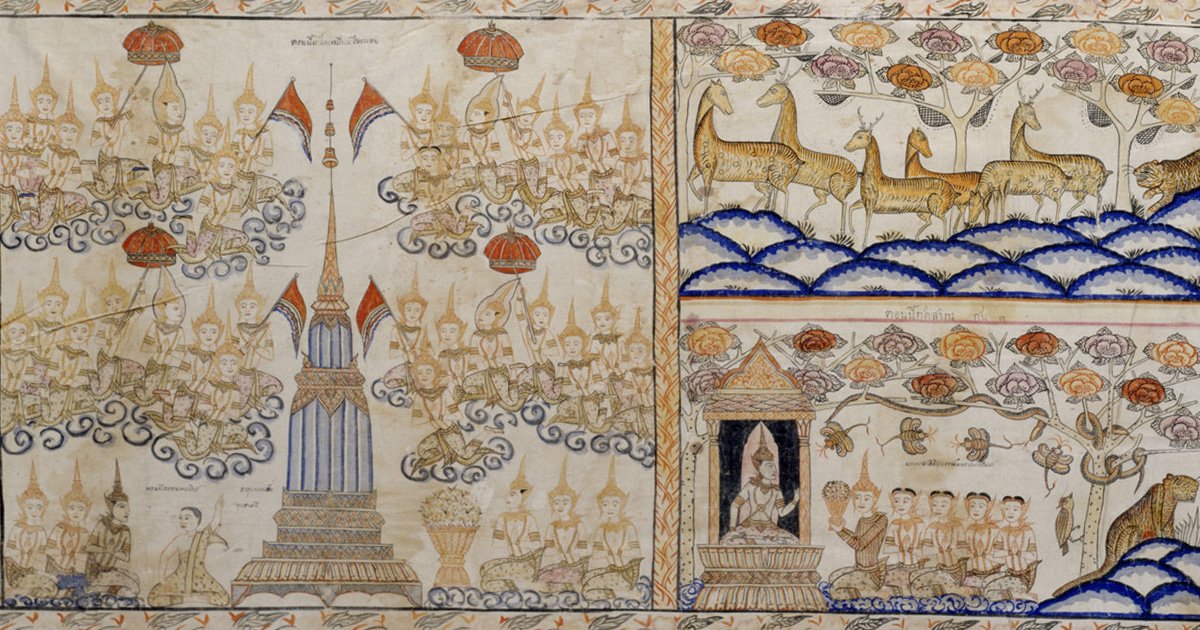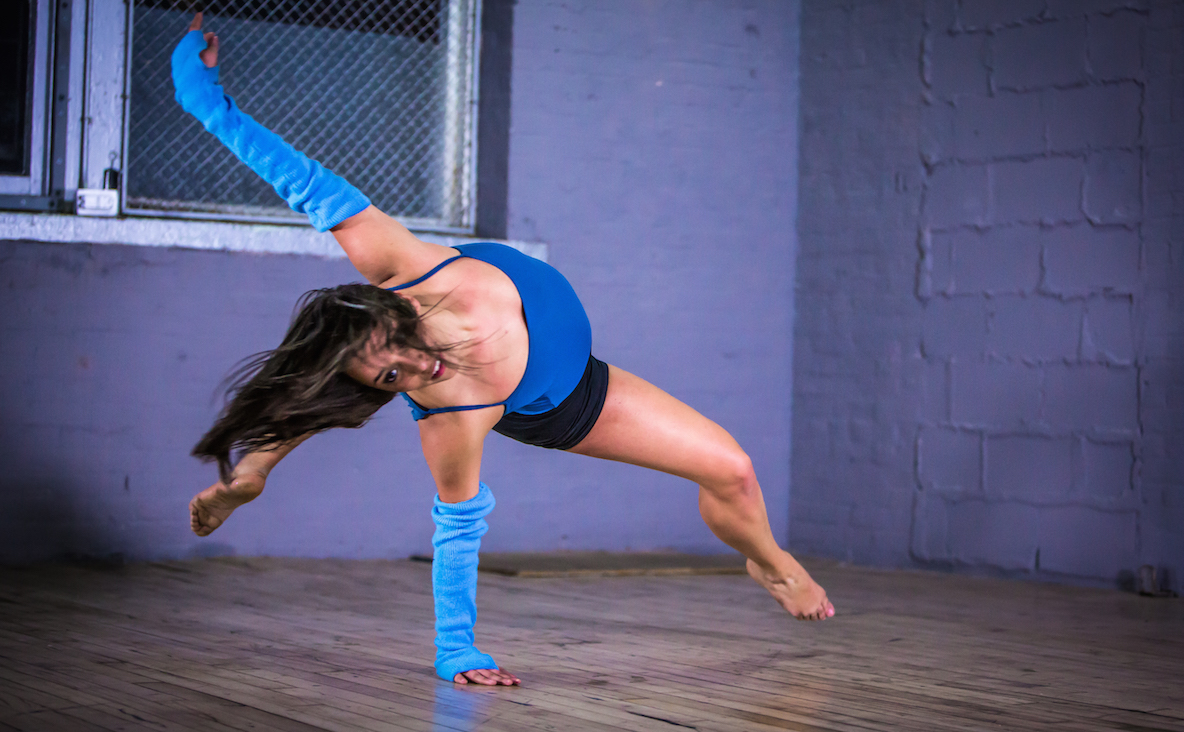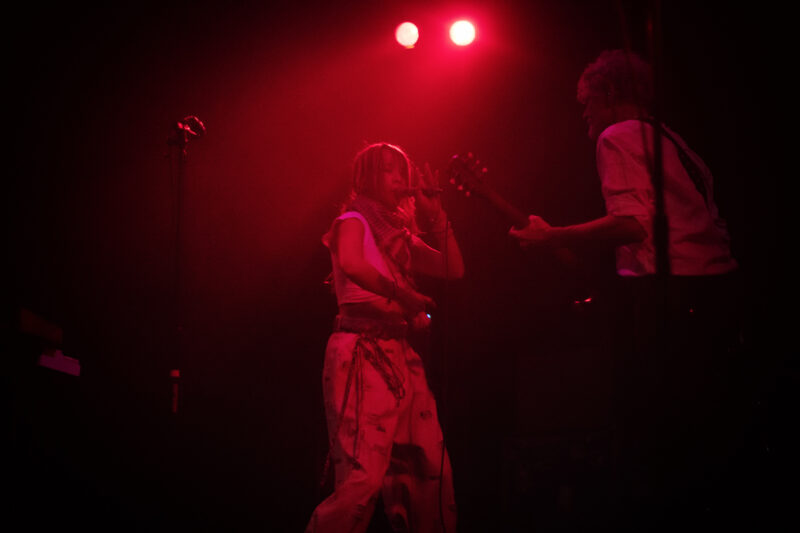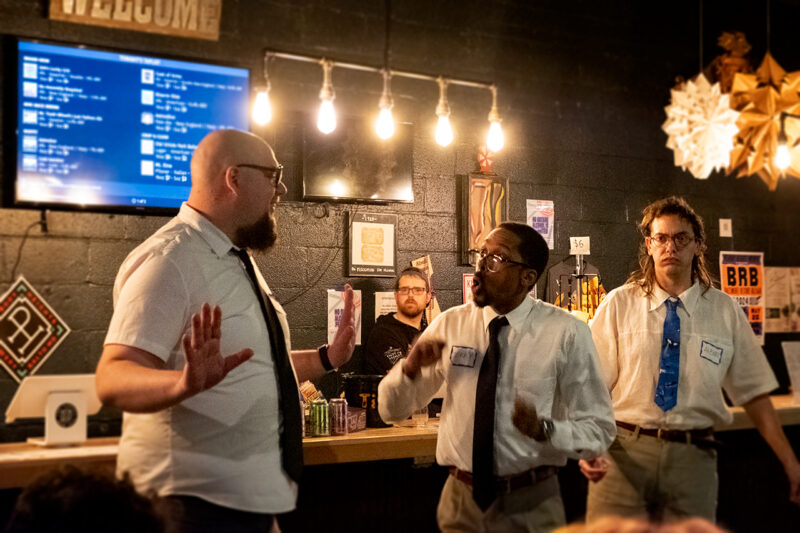A Review of the Baltimore Dance Invitational by Andrew Sargus Klein
Just when it seemed the Baltimore Dance Invitational Performance would offer a homogeneous and safe aesthetic, Kasi Aysola and Madhvi Venkatesh entered the Gordon Center’s stage in resplendent, traditional Indian costumes, backlit by deep yellow. Just like that, we were taken outside of Western contemporary dance and brought into an engaging and mysterious narrative.
“Gopika Prapanna Gita,” by Prakriti Dance out of Bethesda, Maryland, was a gorgeous duet in the tradition of the Indian classical dance form Bharata Natyam. Performed by the company’s co-directors, the dance was light and effortless despite its intricate choreography, and struck a balance between serious and playful. They took us through an unfamiliar story, but let the audience approach it from multiple angles. The dancers were so animated, so thoroughly confident in their movements, it was impossible not to be stirred by the performance.
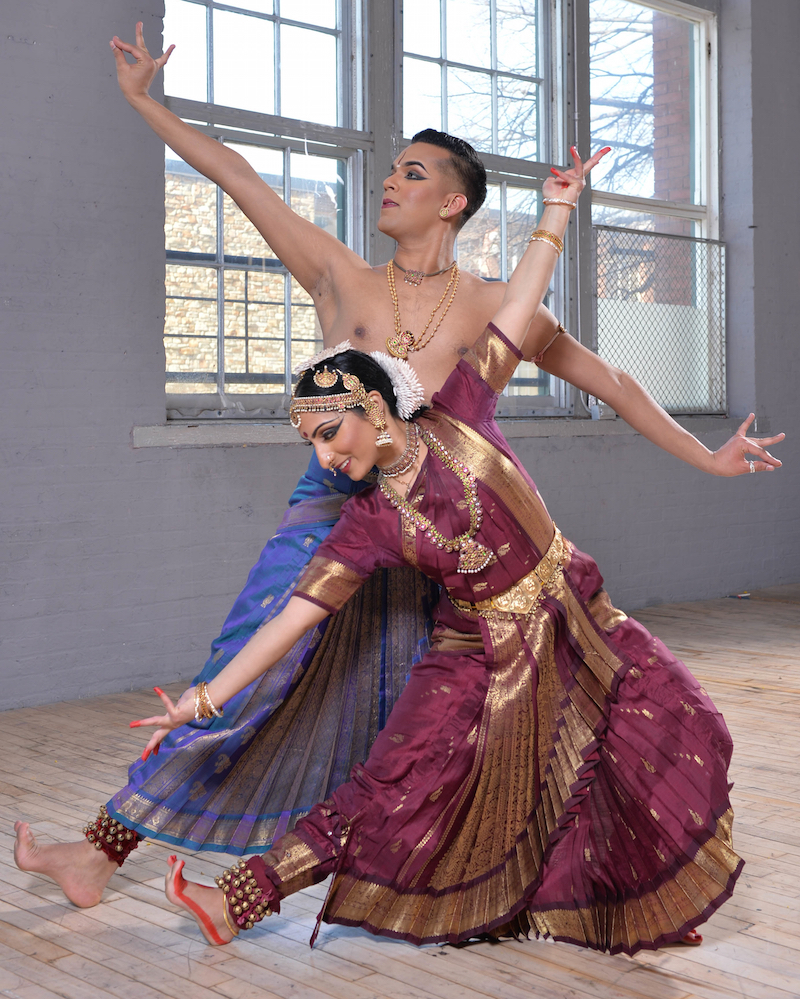 Prakriti Dance
Prakriti Dance
Created and run by The Collective, one of Baltimore’s oldest dance companies, BDI is an adjudicated evening of dance performance. While the majority of the work it presents comes from local companies and artists primarily, they also accept work from throughout the region. This year included submissions from New York, Pennsylvania, and DC. There is a blind jury panel, which views all submissions in video format. They provide feedback based on a score system as well as written, editorial feedback for all submissions. After scores are tallied, the Collective’s co-directors have the difficult task of curating an evening of work.
For the second year in a row, BDI’s venue has been the Gordon Center for the Performing Arts, tucked away in the expansive greens of Owings Mills. Overall, the night presented works that rarely strayed from a safe, approachable aesthetic. The evening opened with The Collective’s own “Human/Being”—a large-scale group piece that ebbed and flowed with a John Butler score of American folk guitar. A dancer or two would separate herself from the group, only to be followed and surrounded. The piece made the most use of the enormous stage as the dancers grouped and regrouped throughout, though their energy also seemed to be swallowed by it.
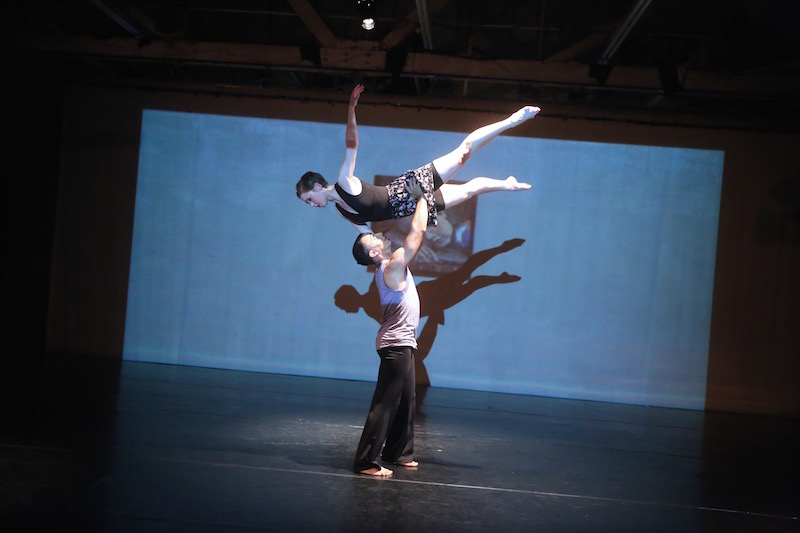 SHARP Dance Company
SHARP Dance Company
Mat Elder’s duet “We Live for the Crows” followed, and soon after, SHARP Dance Company’s “Spreading Wings.” Both duets, these pieces were good examples of the evening’s accessible tone: the audience wasn’t asked to dig deeper than the surface-level narrative; the costumes were simple street clothes; the choreography exaggerated muscular gestures of love and loss and confusion. While there wasn’t much sense of a strong concept other than two people in an emotionally ambiguous relationship, all four dancers had such excellent contemporary ballet technique and execution it didn’t matter all that much. Watching expert movers be expert movers is rewarding in its’ own right.
There were a few misfires. Common Ground Dance Company’s “Princess Affect,” a lighthearted work involving three awkward princesses and a lot of primping, never quite made any point at all. The dancers teetered around uncomfortably in high-heeled shoes. Clothes and hair extensions were taken off and frowned at; laughs were earned through exaggerated expressions of vexation. The point was some sort of struggle with antiquated notions of a superficial femininity, but the solution was murky, at best. They left the stage with tiaras intact and little sense that anything was different.
Trajectory Dance Project’s “Sleight of Hand” appropriated traditional Indian garb and music for no discernible purpose other than to ornament the choreography. Since the piece was still an effective use of space and gesture, the appropriation felt even more bizarre.
 Deep Vision Dance Co
Deep Vision Dance Co
Deep Vision Dance Company performed “Causal Nexus,” a nebulous exploration of particles (or molecules, or atoms, take your pick), which consisted of a limited and repetitive movement and choreographic vocabulary. The dancers bumped into each other, lackluster and aimless, looking for patterns in the chaos. It was set to a pleasantly unsettling score of static and distortion. In fact, the score was perhaps the most envelope-pushing element of the night.
“Causal Nexus,” not having been selected by the adjudicators, was included in the program as an honorable mention. Stephanie Kawesch’s “Under the Rocks” was included in a likewise manner. A young choreographer, Kawesch’s quintet made good use of a surprising score that included Alabama Shakes, Nine Inch Nails, and an excerpt from a TED talk.
Duets seemed to be an accidental theme for the night. Collective member Alyson Jacques’s “The First Time/The Last Time” was a soft, mournful work set to Roberta Flack. The evening ended with an earnest, playful trio by Project 44, titled “Gandy Dancer,” which played more toward a musical theater aesthetic as the three performers took turns soloing to a score that included John Legend, Smokey Robinson, and Ray Charles. The piece explored manhood at a superficial level, but was still entertaining despite the lack of depth. It was also the only performance that included spoken text from the dancers.
While this year’s installment of BDI didn’t push many boundaries, it nonetheless brought a different group of companies under one roof for a night—including some that would never come through Baltimore without this sort of opportunity. Very few venues or companies in Baltimore could even attempt, let alone accomplish, such an undertaking and so this kind of yeoman’s work is difficult and laudable. The night gave local artists the chance to put on work within the auspices of a professional organization and venue when DIY is the norm. As Baltimore’s dance scene grows, BDI stands to be a great vantage point for what the city, and the region, has to offer.
The Baltimore Dance Invitational was held on Sunday, February 21 at the Gordon Center for the Performing Arts.
Author Andrew Sargus Klein is a Baltimore poet and performer. He kinda-sorta tweets at ASargusKlein.
Photos courtesy of The Collective.
